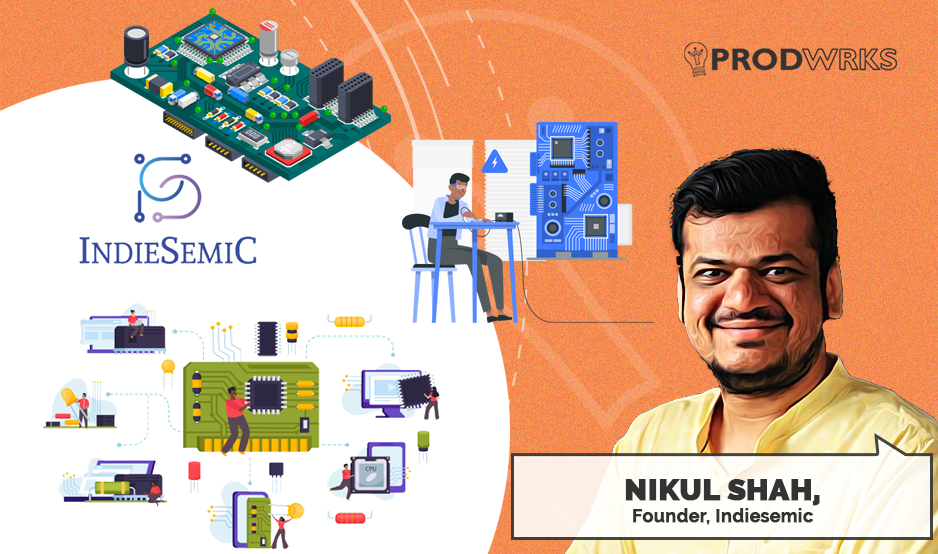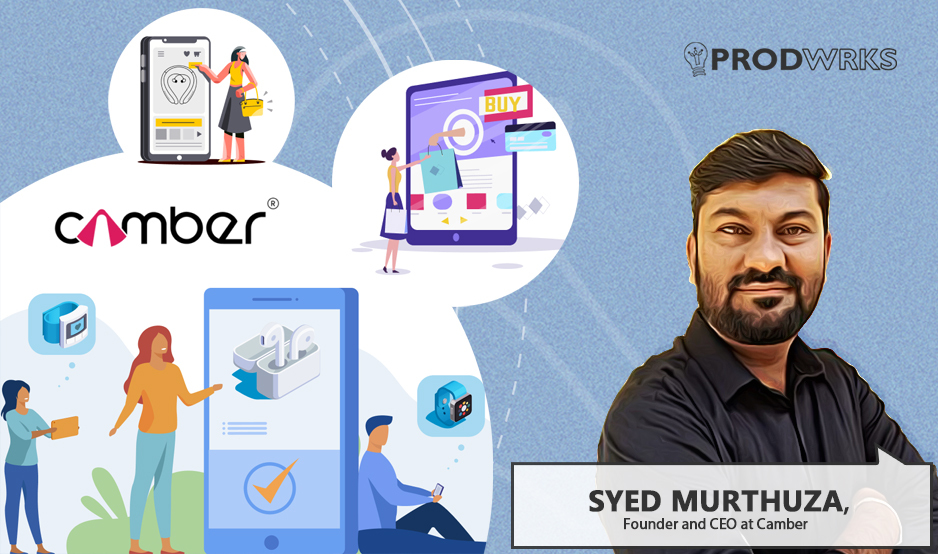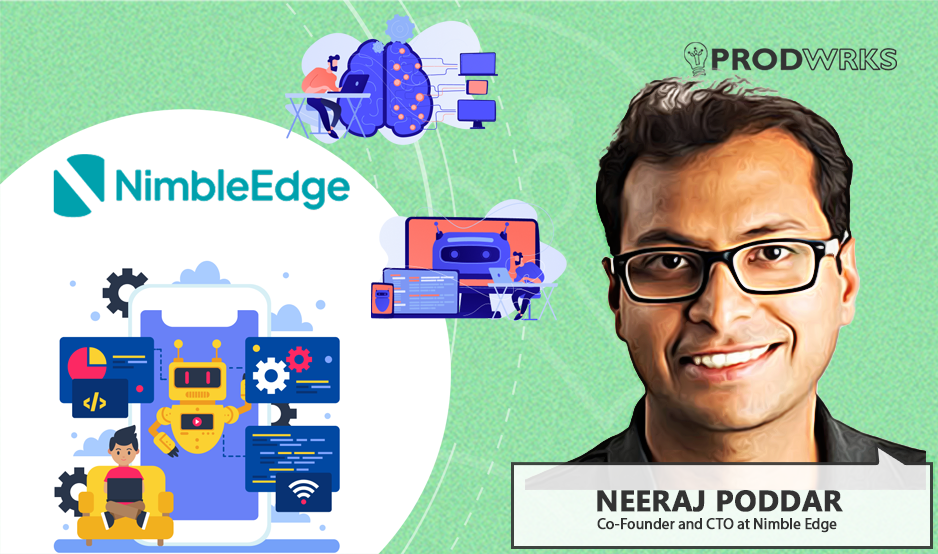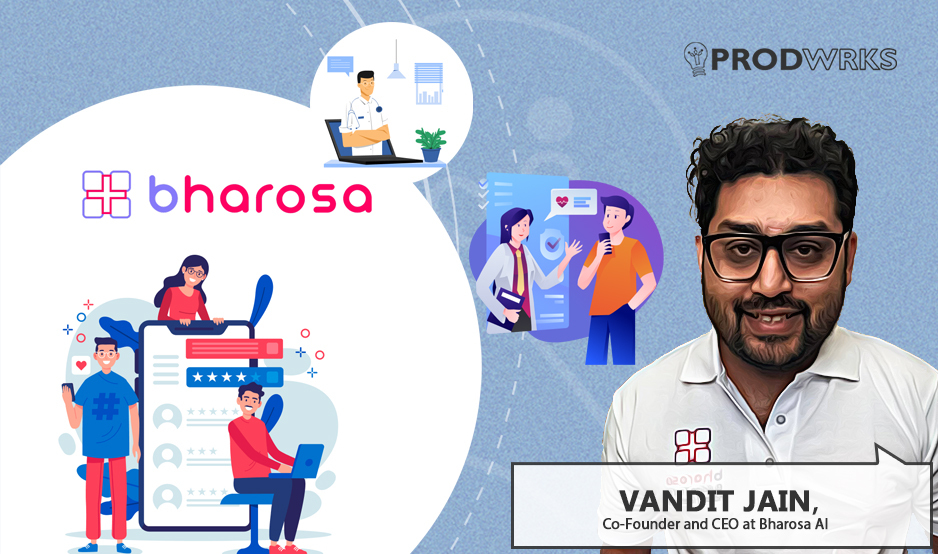
In 2021, when the Covid-19 pandemic ground the world to a halt, a different kind of crisis was unfolding in the manufacturing space. A global semiconductor shortage sent shockwaves through supply chains of every industry, from automotive to consumer electronics. Cars from Tata to Mahindra sat unfinished in lots waiting for “chips,” and Indian electronics manufacturers were also severely affected.
For the nation, it was a multi-billion-dollar wake-up call, laying bare a critical vulnerability. “Nearly 100% of our semiconductor needs were met by imports, primarily from China and Taiwan,” says Nikul Shah, founder of IndieSemic, an Ahmedabad based semiconductor startup founded in 2022.
While most saw a crisis, Nikul saw an opportunity. He saw a future where India wasn’t just assembling products with foreign components, but designing the very heart of those products. This motivated Nikul to take the entrepreneurial leap, leaving a high-paying job to found IndieSemic.
He envisioned an India that moved from being a service provider to a product nation, starting with the most fundamental building block of modern technology – semiconductors.
Today, just two and a half years later, IndieSemic, the fabless semiconductor company has two major divisions, has launched over eight distinct RF (Radio Frequency) module SKUs with another seven in the pipeline, sold over 8,000 units in its first eight months of sales, and serves a growing roster of over 60 clients across India.
In a conversation with ProdWrks, Nikul Shah explains how world-class, cost-competitive semiconductor design can, and must, be done from India. This is the story of how they’re doing it.
Navigating Risk With Pragmatism
IndieSemic was born as a venture that was a pure, high-stakes risk. Unlike software, a semiconductor product can’t be iterated on with a simple code push. A single design cycle can take years and cost a lot, with no guarantee of success.
To mitigate risks, Nikul has structured the company around a pragmatic, two-pronged strategy: an RF module division to generate near-term revenue and market presence, and an SoC division to build the deep, proprietary technology for the future.
Their mission is to offer reliable, homegrown alternatives to imported chips and to cement India’s place on the global semiconductor map through advanced, proprietary designs.
The RF Module Engine (The Chips Driving IoTs)
“RF is everywhere,” Nikul explains. “New smart lights are coming to our homes. New buildings are being designed with smart home concepts. Smart energy, water, and gas meters are being deployed. Everywhere, wireless communication is coming. I saw this had big potential.”
IndieSemic’s first mission was to build a reliable, high-performance, Indian-made alternative to the Chinese modules that dominate the market. They partnered with European tech leaders Nordic Semiconductor for Bluetooth Low Energy (BLE) technology and Semtech for LoRa (Long Range) technology.
This phase in Nikul’s journey is a lesson in the unforgiving physics of hardware development.
Nikul says, “We failed in our R&D in the first six months. We were not able to achieve the range we required. Our module’s range was only five to ten meters, but the market needed at least 50 to 60 meters. We had to restart the R&D.”
The market response has been validating. "In just eight to nine months, we have sold around 8,000 modules. The response we have received from India is very good."
Nikul says, “It takes us six to eight months for module development, designing, and validation. The customer follows a similar cycle on their end. So, if I design a module today and send it to a customer, it will be at least 1.5 to two years before they can start production. But this is an industry where, once production starts, the customer will buy your product for a minimum of five to ten years.”
The SoC Moonshot (Designing India’s Silicon Brain)
While the RF module division builds the business, the second division is building the future. This is where IndieSemic is tackling the “Mount Everest of electronics” – designing its own System on a Chip (SoC).
An SoC, like most presume, is not just a component. It’s an entire computer (processor, memory, peripherals) miniaturized onto a single piece of silicon. It’s the core intelligence of any advanced device. IndieSemic is betting big here, focusing on two critical, high-growth areas.
First, they are developing a sensor-focused SoC based on the open-source RISC-V architecture.
“We are designing a single-core processor that will be used in sensor applications, for example, in an automotive car or in a medical robot during surgery,” Nikul explains.
These applications require a special 24-bit ADC (Analog-to-Digital Converter) to be integrated with the controller, allowing for extremely high accuracy in sensor readings. They’ve already achieved a significant milestone.
“Last year, we successfully completed our first ‘tape-out’ with SkyWater (an open-source foundry),” he says. A tape-out is the final step in the design process, where the digital blueprint of the chip is sent for physical manufacturing.
“The IC is working perfectly, but the frequency we achieved isn't up to the mark for running advanced AI. So now, we are designing our own processor core where we can run AI and also connect these special sensors.”
Nikul says, “If you go to China, Japan, or the US, every street has cameras. That ecosystem is not yet fully built in India. All these cameras require a special processor with ISP algorithms.”
Nikul has already found a customer. “We recently tied up with a listed camera company from Gujarat. Just their production is a minimum of two lakh cameras a year. But in India, the official number of cameras being installed is almost one crore. If you consider non-government use, it’s a huge, billion-dollar business.”
Why India Lags in Semiconductors and How IndieSemic Fights Back
If the opportunity is so massive, why hasn’t India produced a stable of semiconductor design houses before? This is a question we posed to Nikul directly. He offered a blunt diagnosis of the systemic challenges.
“First, this type of design requires special skills and deep experience. In India, those engineers are few and are on very high pay scales at MNCs. They have a good lifestyle and don't want to take the risk,” he states.
“In India, the mindset is, ‘If I invest today, I want to see my ROI in two or three years.’ The semiconductor industry requires ten years of patience. If you invest for ten years, from the eleventh year, it can be a retirement plan for the next seven generations. That mentality is not here yet.”
“In the US, Microsoft has investments in Google-backed companies, and Google has invested in companies backed by other players. You see these clusters. In India, big companies are there, but they are not investing in smaller tech companies to nurture them and help them grow big.”
Solving the Cost Conundrum
“China can sell a camera processor for $1,” Nikul explains. “If someone wants to build that in India, they might have to sell it for $8 or $10. No one is ready to pay that difference.”
IndieSemic’s strategy to compete is multi-layered to bring down costs. First, they are designing own IPs (Intellectual Properties). When we (Indian companies) design our own processor, we don’t have to pay royalties to companies like ARM.
Second, companies like IndieSemic are now using government-developed IPs, like the Vega processor from C-DAC. The royalty for a government IP is very low.
Third, IndieSemic is planning for the future in India where semiconductor foundries from Tata or Adani come online in India.
Nikul says, “We will manufacture there. This eliminates import duties on wafers. By removing these costs, we can be competitive.”
Nikul shares that his path is a pragmatic business-first approach in a tech-heavy industry.
“We are focusing on the sets, on the customer, on building the business. As a Gujarati, we only focus on business. Technology is always there, but without business, you cannot build technology. This is my mindset.”
Understanding the Deep-Tech Equivalent of Product-Market Fit
“The market is targeting our technology. In an IoT market, if someone is designing smart lighting or automotive clusters, wherever IoT comes, our product fits.”
For IndieSemic, PMF isn’t about a single application but about hitting a fundamental value proposition that unlocks hundreds of applications. Nikul puts this simply as delivering the “quality of US/Europe with the cost of China.”
This is their North Star.
The Tough Grind of Selling Hardware
“Their (client’s) engineers will ask, ‘I’m getting this module for 100 rupees. Yours is 200 rupees. Why should I buy from you? You are a new vendor.’ Then we have to convince them. We talk about aligning with the Prime Minister’s vision about building an ecosystem in India together.”
The process often starts with free samples. IndieSemic provides their potential clients with free modules. The clients use them in their design, they test them, and then comes the discussions about the cost.
“They come back and say, ‘Okay, the performance is the same as the Chinese or US-based company. Let’s discuss the cost.’ It’s a continuous back-and-forth,” Nikul shares.
The sale also needs to navigate a complex web of decision-makers. “In India, it’s very tough. The engineer sends it to the purchase team, the purchase team sends it back to the design team. We try to go to the director level directly and pitch them.”
“But sometimes, they are resistant and will only use Chinese parts as it’s cheaper. We have learned that out of ten such customers, we might be able to convince two, but none will give us production orders. But customers who want to build a truly Indian ecosystem find the value in building with Indian components. Their engineers help us, coordinate with our team, and we build the product together.”
“We have developed a lot of our own firmware IPs. If they use our module, we supply those IPs to them. This increases engagement. We take feedback every month. And we are obsessed with quality. The modules we deploy now have a yield of 99.5%, which we achieved by creating our own rigorous testing fixtures.”
Building a Semiconductor Company = Building an Ecosystem
“Mostly, we hire freshers. We do very good R&D work and we train them, and they deliver. But this approach has an inevitable side effect. In the last two years, 50 people have come to my company. 30 are still with me, but 20 have gone to work for Tata’s or Micron’s new foundry projects. The R&D experience that people require in MNCs, we provide them here.”
While this “brain drain” is a challenge, Nikul sees it as a contribution to the larger Indian semiconductor ecosystem he hopes to build. To retain core talent, the company has an ESOP pool for committed, long-term employees.
With a proven business model in RF modules and two ambitious SoC projects underway, IndieSemic is now at an inflection point. They recently closed a bridge round and are preparing for a Series A raise. But Nikul is looking for more than just capital.
“I am looking for good technical partners to come on board who can provide real value addition to my venture. I don’t want to limit my company to a Rs. 200-300 crore business. I need to make it 500 crore, then 1000, then 5000. To achieve that, I require pure technical partners who understand that R&D requires a lot of cost and patience.”
“Beacon technology will boom. Asset tracking is already huge globally. It has a huge market potential in India. Think of all the parcels Amazon and others are sending. Smart lighting and cameras will continue to boom. These are all the spaces that we are designing our IPs.”
Nikul says, “India will be a product nation. But we need support from the full nation. Two companies or ten companies cannot build this alone.”



